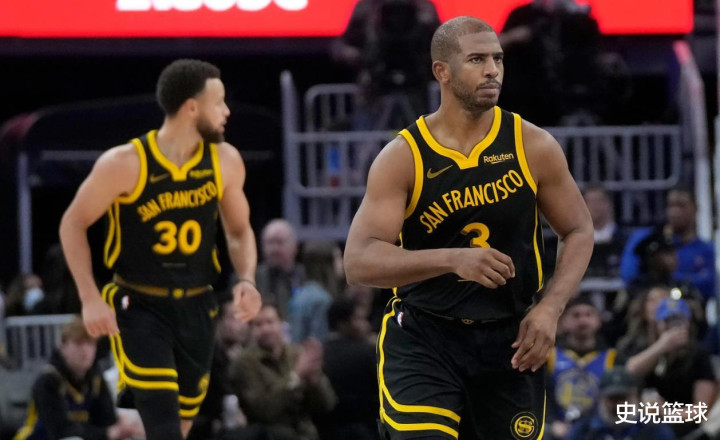NBA s top rhythm master: On Chris Paul s ball-handling and organization art
2:40pm, 23 November 2025Basketball
My ancestors have been watching football for many years, and have seen Iverson's butterfly-piercing breakthrough, and Curry's indiscriminate bombing from beyond the three-point line. However, when it comes to playing basketball as an "extension of the body" and turning the team's offense into a "precision instrument," Chris Paul is ranked second, and few guards dare to be ranked first. Even though he was gasping for breath on the bench at the end of his career, as soon as he got the ball, his "everything is under control" aura can still remind people of the "god of field control" who gave defenders all over the league headaches.

Rhythm Controller: The lethality of the slow three-beat
In the small ball era that pursues extreme speed, Paul went in the opposite direction. His "slow three-beat" has become the most lethal weapon. Everyone else was pushing as fast as they could, hoping to complete the attack in two seconds, but Lao Pao'er was holding on to time! This is not slow at all, but a more advanced rhythm control. This ability to "kill with rhythm" shows more skill than pure speed and strength. His dribbling range is not large, but he can always step into the space where the defender's center of gravity changes, like an elf rolling against the floor. You clearly know what he is going to do, but you just can't keep up with his rhythm. Others control the ball with their hands, but he controls the ball with his brain. Look at his posture when dribbling the ball halfway, with his waist slightly bent, the ball stuck to his hands, and his eyes scanning the entire court like radar. That's not observation, that's programming! Just waiting for a bug in your defense, he will immediately implant a virus into you.
Master of Prediction: Basketball Wisdom of Reverse Control
If ball control is Paul’s “basic skill”, then organizational ability is his “ trump card ”, and the core of this trump card is his reading ability that is comparable to that of a coach on the court. The scariest thing about Paul's passing is his "anticipation". He can always be half a beat faster than his teammates and one beat faster than the defender. Before his teammates are fully in position, the pass has already been sent to the most comfortable receiving point in advance. Most defenders now pursue "creating opportunities," while Paul plays "predicting the birth of opportunities." He never force-feeds the cake, but sets up the situation first to lure the defender into a dead end. In the heyday of the Clippers' "Lob City", Griffin and DeAndre Jordan's soaring dunks were enjoyable to watch, but it was all Paul's credit behind them. He can always accurately judge the defensive loopholes after the pick-and-roll, either using a ground pass to feed the inside line, or using a lob to send an alley-oop. Those seemingly extremely difficult passes are routine in his hands.

An artist of error control
What's more rare is his stability. He averaged only 2.4 turnovers per game in his career, and averaged 9.5 assists per game. His assist-to-turnover ratio has remained at the top level in the league all year round, which is synonymous with the "art of error control". How often have you seen Paul do a blind pass just to show off his skills? Every pass he makes has a margin of safety. Just like playing Go, you would rather take a step slower than take a step forward. This kind of field control philosophy allows his team to always have an "old-school" elegance - chaos? Doesn't exist. His game is to break down 48 minutes into countless micro tactical units, and each round is like solving a mathematical problem.
The perfect fusion of tradition and modernity
Paul is a master of the perfect fusion of tradition and modernity. He doesn't rely on talent like Magic, nor does Stockton rely solely on stable output. He has the organizational core awareness of a traditional point guard and the scoring ability of a modern guard - his career shooting percentage is 47.2%, three-pointers are 36.9%, and free throws are 87%. This means that the defender simply does not dare to let him go. If you stay inside to prevent him from passing the ball, he will raise his hand and make a precise mid-range shot; if you guard him from shooting, he will tear apart the defense with a change of direction, either attacking himself or creating opportunities for his teammates. Remember his little "fake fax" trick? Obviously his eyes and shoulders were pointed at his teammate in the right corner, but he sent the ball into the basket with a flick of his wrist. This is no longer technology, this is psychology!

Wisdom in the Afterglow
At the end of his career, Paul's scoring average dropped to single digits, and he was also beaten by young people on defense. But occasionally he can still use a long pass across the entire court to accurately find his teammates for a layup. At that moment, his passing vision is still the same as the "God of Field Control" back then. The way he squatted on the bench and covered his mouth with a towel while giving tactics to young players was telling the world: The essence of ball-control organization has never been about how well the body can run, but how clear the mind is. In this era of data explosion and pursuit of visual impact, Paul used his stable performance for two decades to tell us: the most essential happiness of basketball comes from defeating talent with wisdom and controlling the game with rhythm.
Doug Rivers said he is a "coach on the field," and that's true. Not only can he execute tactics, he can also adjust in real time according to the defense, and his brain can move faster than his body. No matter how young or frivolous a player is, playing with him for half a year is like a blessing. He is not playing basketball, but teaching a set of survival rules in the basketball world. After Paul retired, he took away not only an era, but also a whole set of philosophies about ball control and organization. And this kind of basketball wisdom that slows down time and reads space thoroughly will probably be hard to come by for a long time.
Related Posts
- G4 referee report shows 0 misjudgment. Why are people still bombarding Foster?
- 118 becomes 122! Yang Hansen, awesome! The first core of the Chinese men s basketball team in the future
- The best battle in NBA history: Who is the real GOAT, Jordan or James?
- The Lakers have the idea of sending James away, but because they are not in line with Reeves, they are centered on Doncic
- O Neal commented on his top ten in history: James fell to third place, and he and Kareem Abdul-Jabbar were eliminated.
- Warriors change their fate against the will of heaven! Lillard s minimum salary is parachuted into Curry s ultimate weapon
- Doncic lost 4 of 18 and lost 34 points! Jokic won 7 consecutive victories in 10+8: becoming the number one favorite to win the European Championship
- Can score points and handle the appointment with the teacher! Is the role of the Thunder s inside general seriously underestimated?
- An all-around performance against the Clippers! The improvement of the Magic s new backcourt star is quite amazing?
